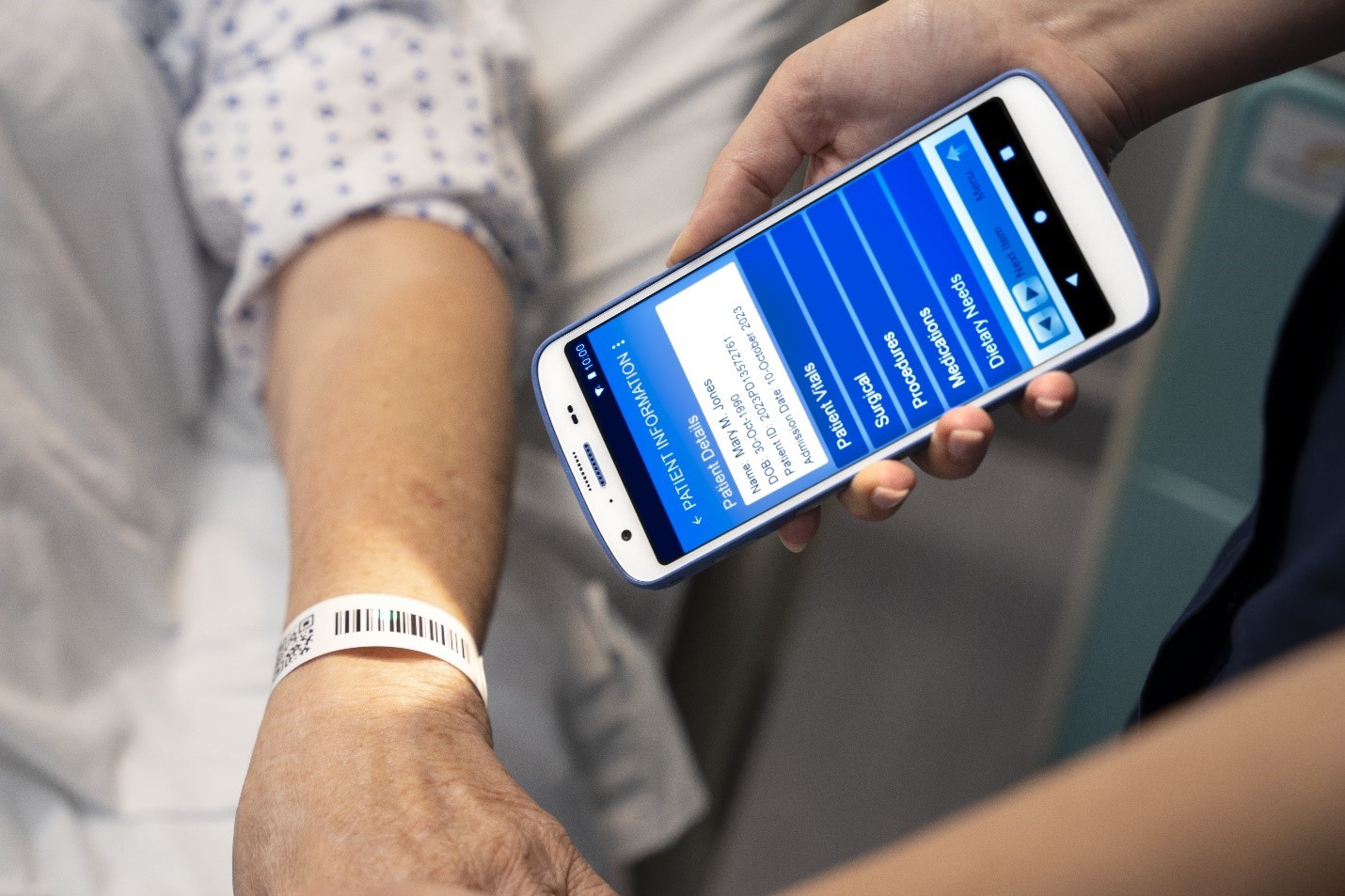February 01, 2024
An Ideal Device for Clinical Mobility: Zebra’s HC50 Healthcare Mobile Computer
In this article, we’ll take a look at the HC50, how it fits perfectly into a good clinical mobility strategy and how it helps clinicians work more efficiently while saving hospitals tens to hundreds of thousands of dollars in long-term costs.

Clinical efficiency is at an absolute premium in hospitals and healthcare facilities, and that means clinicians need mobile devices that help them get their jobs done and provide high-quality patient care with less effort and burden.
However, not every mobile device is up to the task. Relatively few mobile computers or tablets can keep up with the intensive demands of healthcare environments, especially with all the long shifts, resource-intensive clinical apps, emergency communication needs and constant cleaning and sanitizing. These demands overwhelm most hardware, and some hospitals have had to replace entire fleets of mobile devices after as little as six months, due to performance and durability issues.
This is why it’s absolutely vital to invest in best-in-class healthcare-grade mobile computers for clinical mobility, and, at CDW, one of our recommendations is Zebra’s HC50 healthcare touch mobile computer.
In this article, we’ll take a look at the HC50, how it fits perfectly into a good clinical mobility strategy and how it helps clinicians work more efficiently while saving hospitals tens to hundreds of thousands of dollars in long-term costs.
How the Zebra HC50 can help clinicians
CDW customers who’ve purchased HC50 devices report that their clinicians love how much easier these devices make their jobs. The high-performance processing power and memory makes EHRs and other clinical apps far more responsive, which saves seconds and minutes that add up to countless hours. The HC50’s all-in-one communication capabilities also make it much easier to collaborate with other clinicians and staff in real time, and the ability to use push-to-talk, send emergency alerts, access PBX phone lines and send secure texts from a single device saves time and effort throughout every shift.
Clinicians also love the HC50’s longer battery life, hot-swappable battery and fast charging capabilities. They can easily keep their device powered up and running during ultralong shifts, and they can even swap out a battery while still keeping their operating system and apps running uninterrupted.
They also like the fact that the HC50 is extremely thin and lightweight, at just 0.49” thick and weighing only 8.5 ounces. Additionally, it has contoured surfaces and sculpted lower bumpers to minimize hand fatigue and reduce pressure points, so it comfortably fits into clinicians’ hands for hours on end.
The HC50’s data capture capabilities are also a huge help, as the ability to capture UDI and other 1D/2D barcodes, signatures and other data with its advanced imaging and algorithms is a welcome alternative to trying to rely on a smartphone camera. You have a true enterprise-grade barcode scanner in your hand, in the same device that you use for clinical apps and communication, so there’s no need to juggle different hardware.
How IT can benefit from the Zebra HC50
IT teams are also big fans of the HC50, especially due to its extreme ruggedness and resistance to harsh healthcare-grade sanitizers. This helps keep these devices damage-free, and since the HC50 is built for years of reliable performance and to withstand constant abuse, it requires far less maintenance, servicing or repair than other devices.
Importantly, the HC50 is also easy to locate if it’s misplaced or lost. You can quickly and easily locate it by using Zebra’s Device Tracker, a software tool that helps locates devices using your Wi-Fi network, Bluetooth® technology, secondary BLE beacons, proximity metres and phone rings.
Device Tracker will show you the approximate location of your device and then help pinpoint it and guide you to it as you reach it, using a combination of options. It can even locate a device if its battery has reached a critical state and it has powered off, by using a secondary Bluetooth LE beacon that’s attached to its battery. The secondary beacon provides up to days of repeated pings, so you have plenty of time to locate your device using Device Tracker and another mobile device to help you with your search.
Explore the Zebra HC50 for your clinical mobility needs
All of the features and capabilities we’ve covered here add up to one of the best clinical mobility solutions on the market today. That’s why our healthcare technology experts at CDW have made the HC50 one of our top recommendations.
To learn more about this device, feel free to speak with your CDW account representative to request pricing and schedule a consultation with a Zebra expert.
